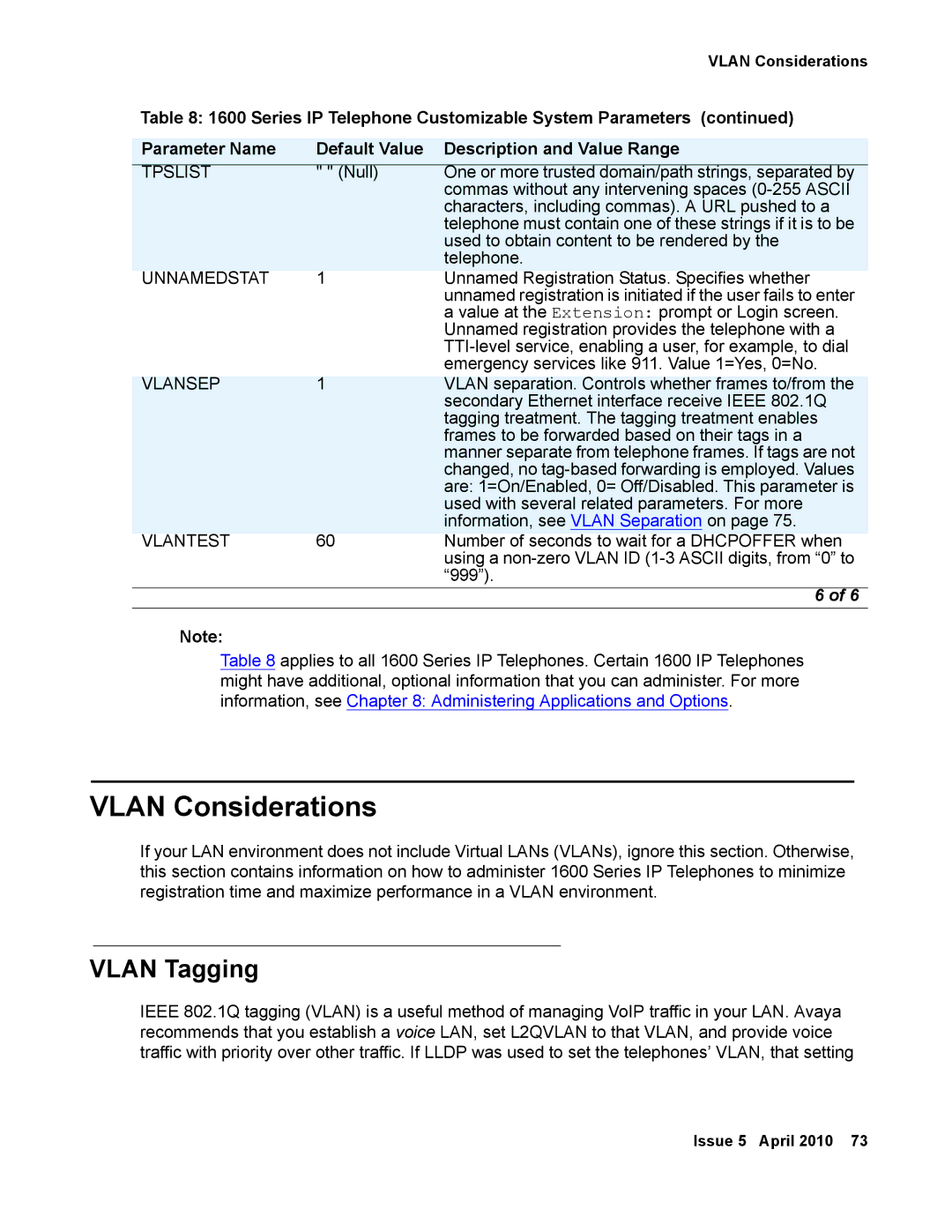
VLAN Considerations
Table 8: 1600 Series IP Telephone Customizable System Parameters (continued)
Parameter Name | Default Value | Description and Value Range |
TPSLIST | " " (Null) | One or more trusted domain/path strings, separated by |
|
| commas without any intervening spaces |
|
| characters, including commas). A URL pushed to a |
|
| telephone must contain one of these strings if it is to be |
|
| used to obtain content to be rendered by the |
|
| telephone. |
UNNAMEDSTAT | 1 | Unnamed Registration Status. Specifies whether |
|
| unnamed registration is initiated if the user fails to enter |
|
| a value at the Extension: prompt or Login screen. |
|
| Unnamed registration provides the telephone with a |
|
| |
|
| emergency services like 911. Value 1=Yes, 0=No. |
VLANSEP | 1 | VLAN separation. Controls whether frames to/from the |
|
| secondary Ethernet interface receive IEEE 802.1Q |
|
| tagging treatment. The tagging treatment enables |
|
| frames to be forwarded based on their tags in a |
|
| manner separate from telephone frames. If tags are not |
|
| changed, no |
|
| are: 1=On/Enabled, 0= Off/Disabled. This parameter is |
|
| used with several related parameters. For more |
|
| information, see VLAN Separation on page 75. |
VLANTEST | 60 | Number of seconds to wait for a DHCPOFFER when |
|
| using a |
|
| “999”). |
|
| 6 of 6 |
Note:
Table 8 applies to all 1600 Series IP Telephones. Certain 1600 IP Telephones might have additional, optional information that you can administer. For more
information, see Chapter 8: Administering Applications and Options.
VLAN Considerations
If your LAN environment does not include Virtual LANs (VLANs), ignore this section. Otherwise, this section contains information on how to administer 1600 Series IP Telephones to minimize registration time and maximize performance in a VLAN environment.
VLAN Tagging
IEEE 802.1Q tagging (VLAN) is a useful method of managing VoIP traffic in your LAN. Avaya recommends that you establish a voice LAN, set L2QVLAN to that VLAN, and provide voice traffic with priority over other traffic. If LLDP was used to set the telephones’ VLAN, that setting
Issue 5 April 2010 73
